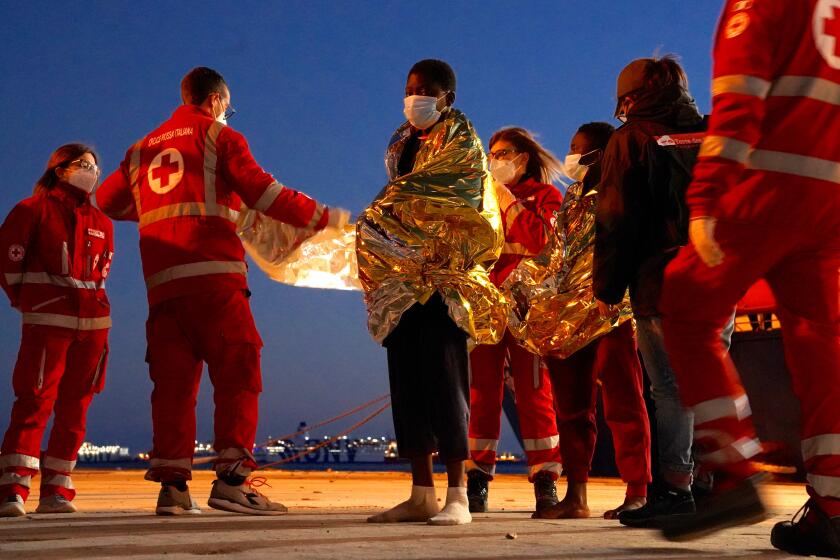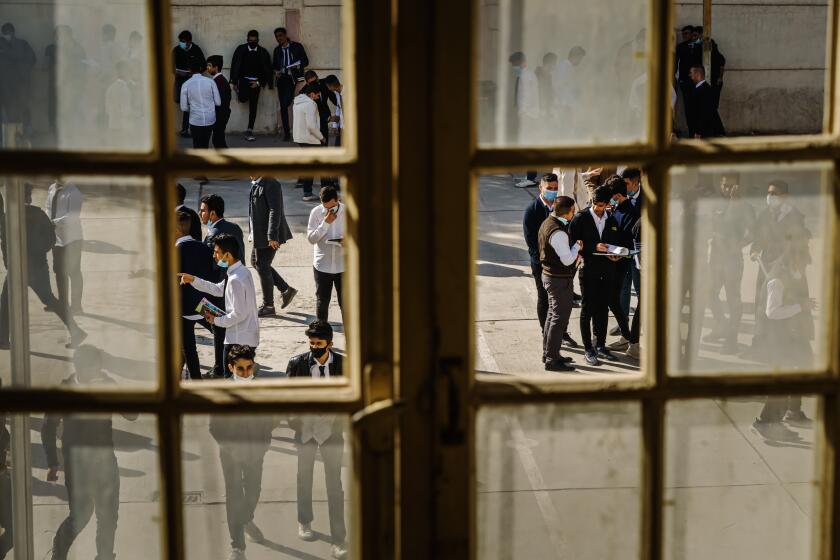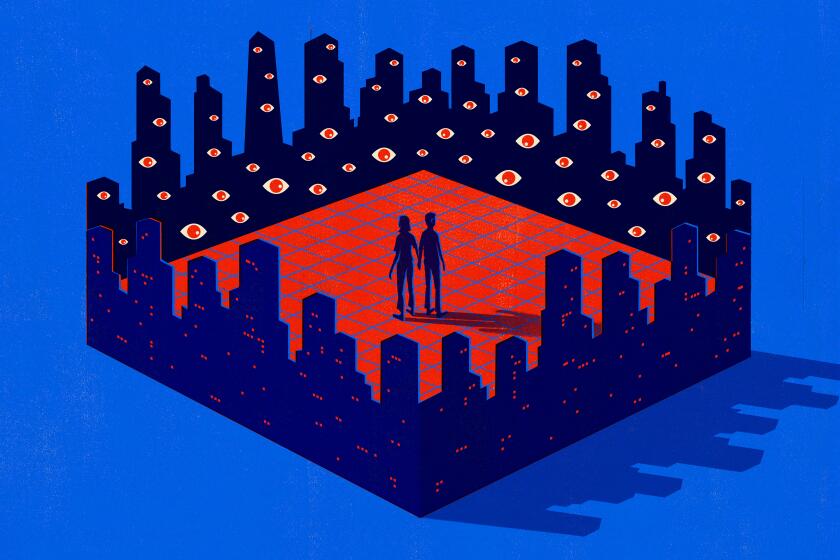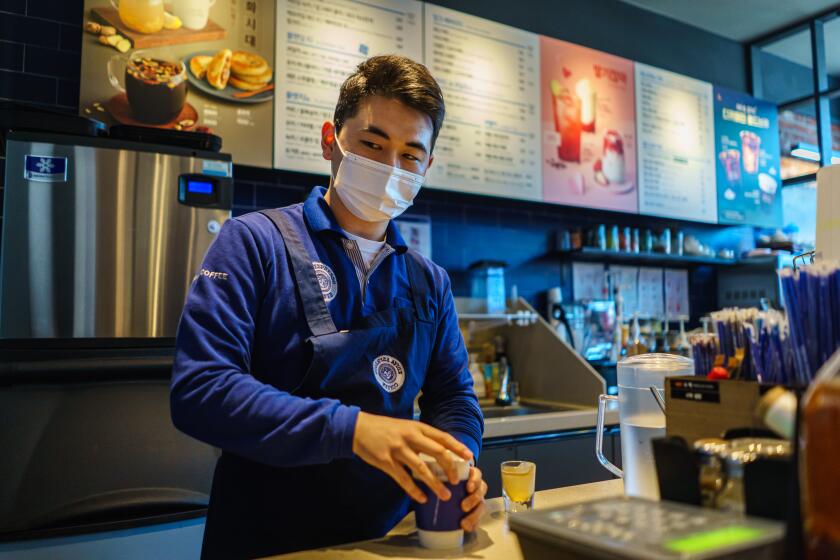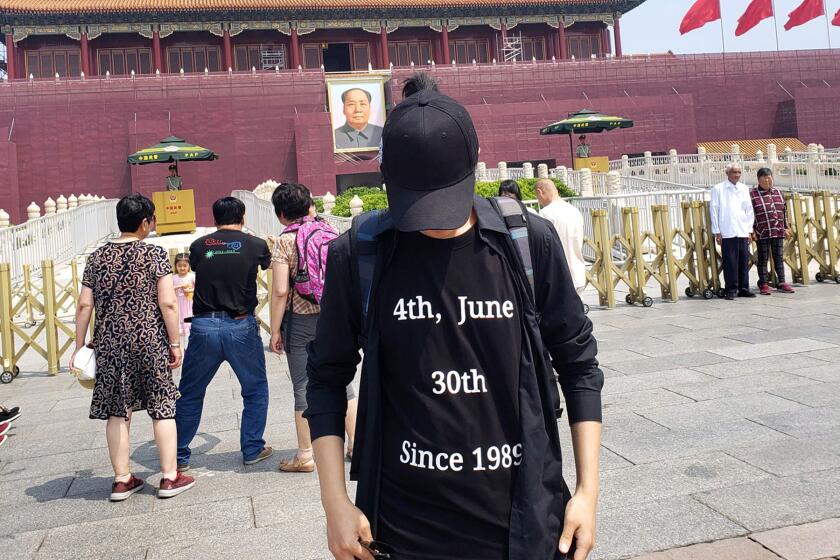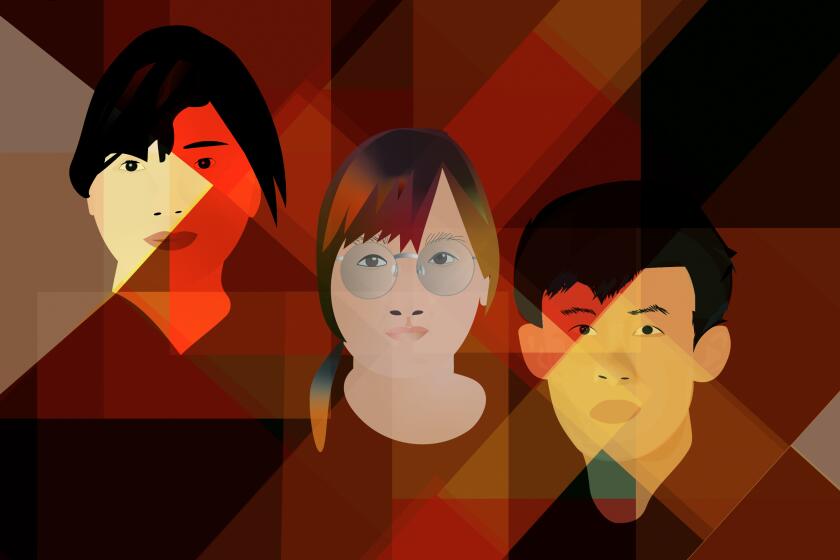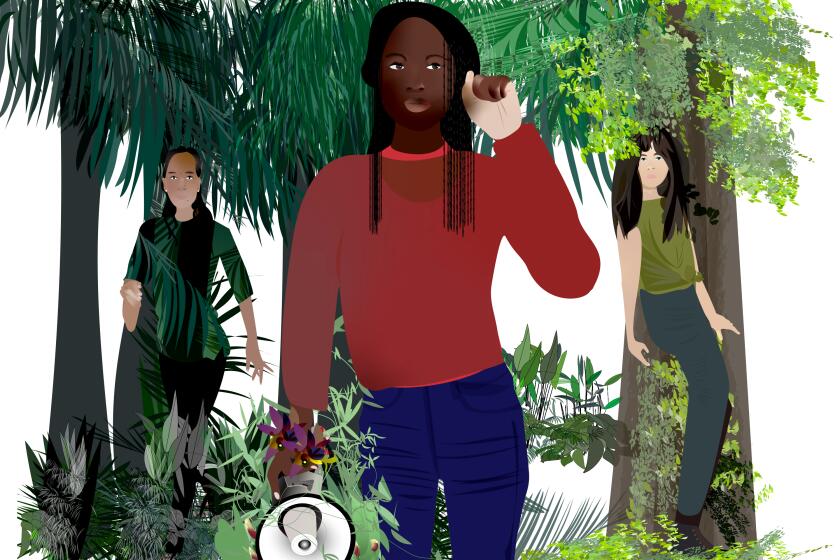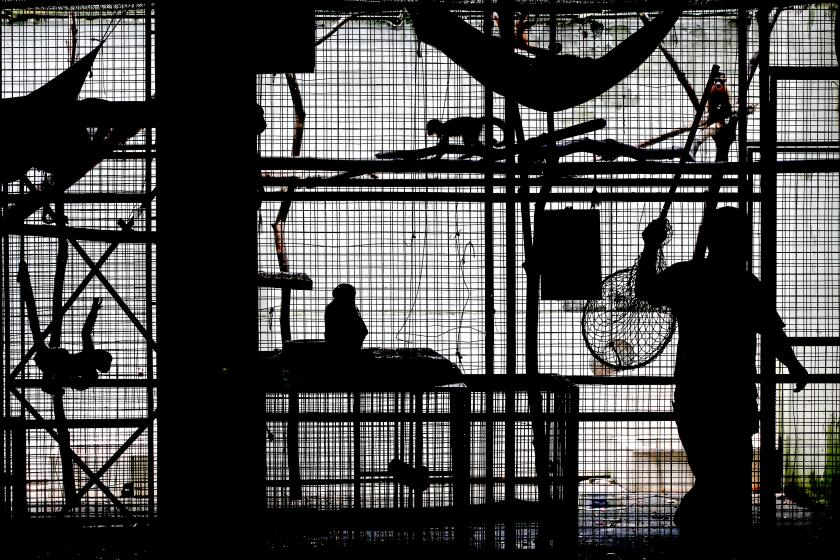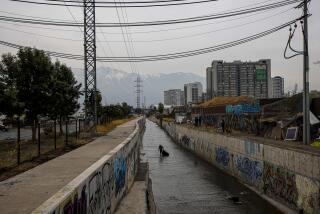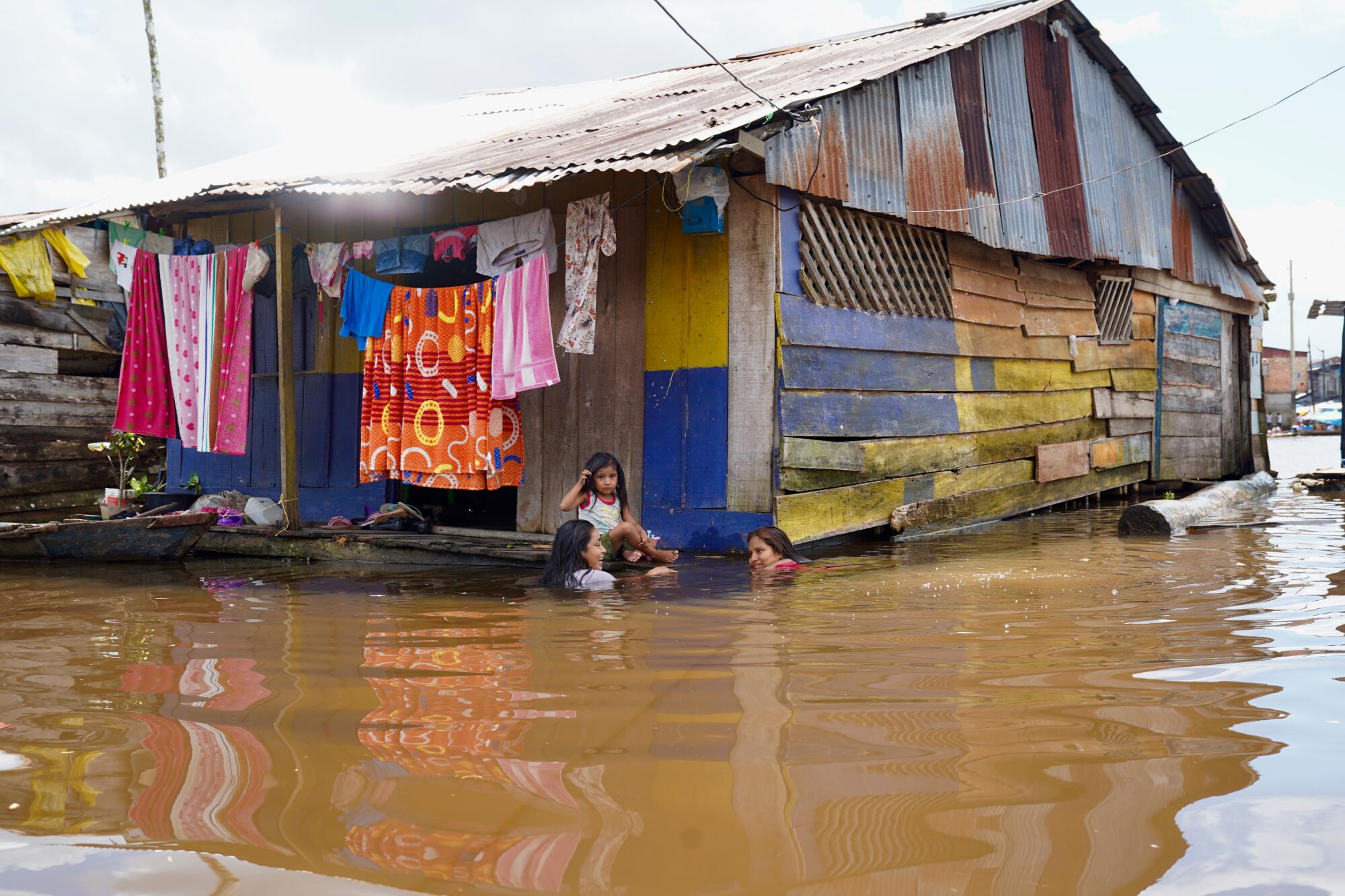
IQUITOS, Peru — When the pandemic began to ravage this jungle city, Marlon Ashanga loaded his wife, two kids and virus-stricken father into a canoe and guided them three days upriver, deep into the Amazon rainforest.
“People were getting sick everywhere, and we were scared,” recalled Ashanga, a boatman in Belen, a port district of bustling street stalls and homes on stilts. “In the forest, we could rely on natural remedies. And I knew we wouldn’t starve.”
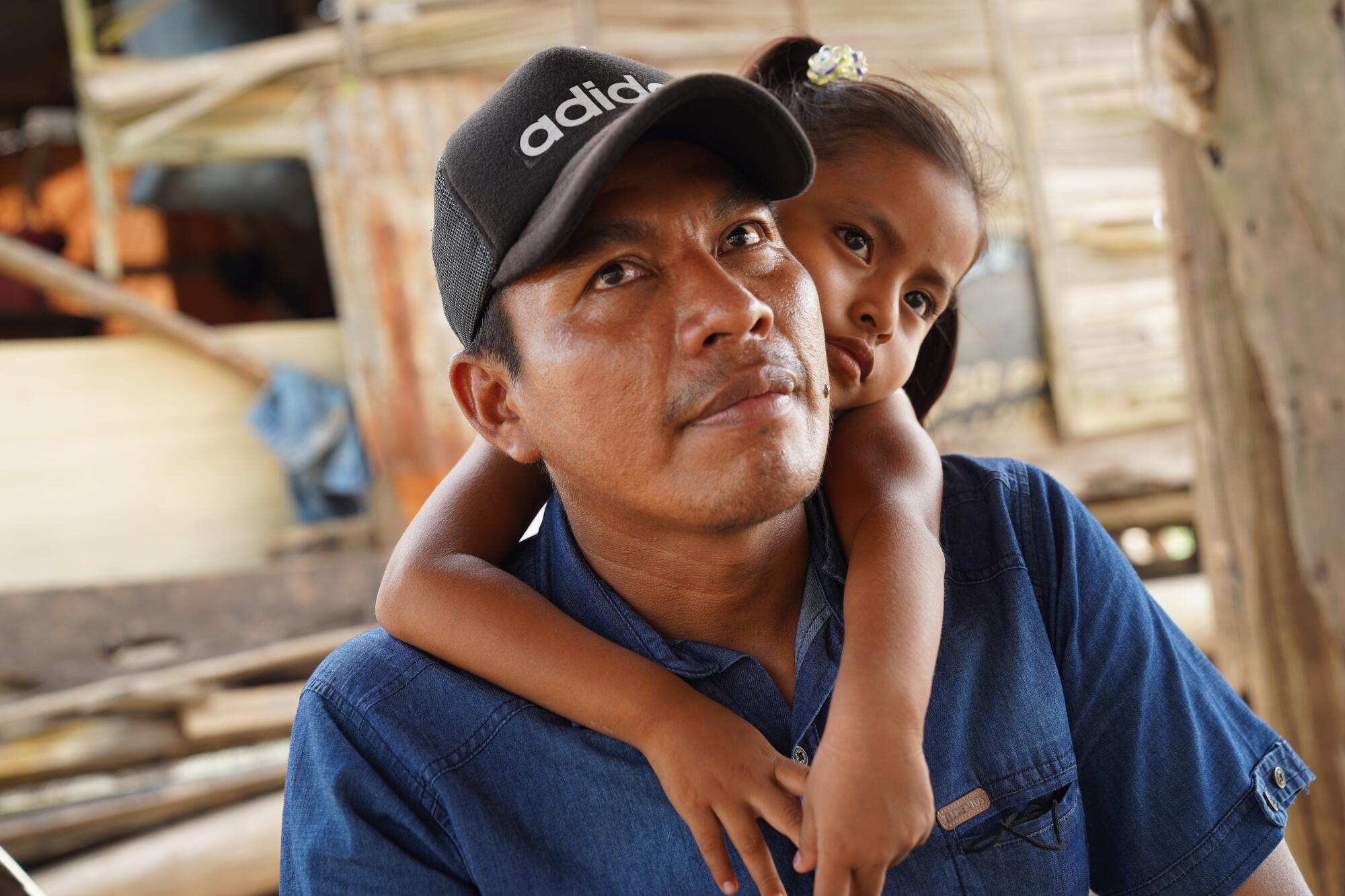
Felipe Solomón Valles fled in the opposite direction: He was with his wife teaching in a remote village when the radio carried word of a spiraling contagion and nationwide lockdown that was threatening to trap the young couple and their infant far from their families. The three slipped out in a banana boat and later trekked through the bush lugging their belongings to elude stay-at-home orders enforced by police.
More than a year after their respective getaways, the two young men — who both say they survived debilitating bouts with COVID-19 — now face the daunting challenge of how to support their families in this pandemic-battered nation, where copper mines rip through mountains and the Pacific rolls along 1,500 miles of coast. Valles and his wife are unemployed. Ashanga barely scrapes out a living.
The coronavirus has plunged millions of Latin Americans into poverty and reversed halting regional progress toward equality — dealing an especially callous blow to young people facing the twin barriers of surging unemployment and diminished opportunities.
The World They Inherit
This is the second in a series of occasional stories about the challenges young people face in an increasingly perilous world. Reporting was supported by a grant from the Pulitzer Center.
“We have a great need now, but there is also a lot of competition for jobs,” said Valles, 27. “It’s a bit depressing to not be working. But at least I have my family.”
While the poor got poorer, the region’s middle classes, toward which the young were aspiring, faced their own reckoning as their advances of recent years were stymied, their savings exhausted. A sense of desperation now reigns from tropical outposts to Andean villages to urban barrios and shantytowns, igniting a rejection of old-guard leadership manifest in Peru’s election in June of a leftist populist school teacher as president and mass protests that have shaken Colombia since spring.
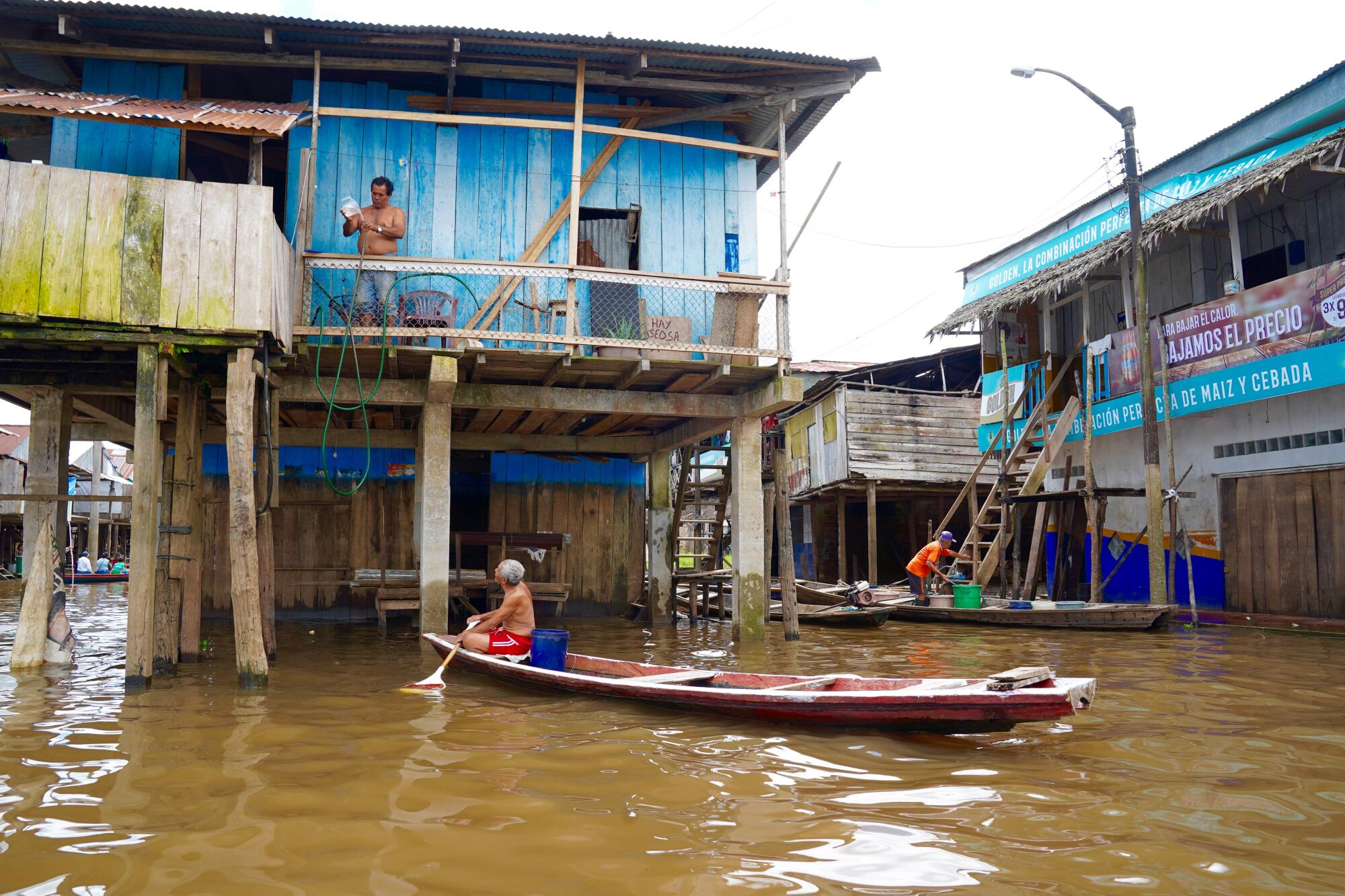
Latin America and the Caribbean, home to 8.4% of the world’s population, have recorded almost one-third of COVID-19 fatalities. But the young of Latin America are not only inheriting the lasting consequences of a pandemic. They also face a widening wealth gap and a disquieting legacy of violence, political turmoil and social strife. Their voices veer from rebellion to resignation about how to navigate everything from cartels to corruption to climate change.
Despite an early quarantine, Peru has experienced the world’s highest COVID-19 fatality rate, about 600 deaths per 100,000 population, more than three times that of the United States, according to Johns Hopkins University. Livelihoods have been shattered throughout Latin American and the Caribbean, where 26 million jobs were lost and the collective economy shrank 7.4% in 2020 — the largest drop on record, according to the Inter-American Development Bank.
“The pandemic has exposed and accentuated the region’s Achilles’ heel — extremely high levels of income equality,” said Michael Shifter, president of the Inter-American Dialogue, a Washington study group. “Latin America’s youth crisis — it is not hyperbolic to refer to a possibly ‘lost generation’ — is a powder keg for the region.”
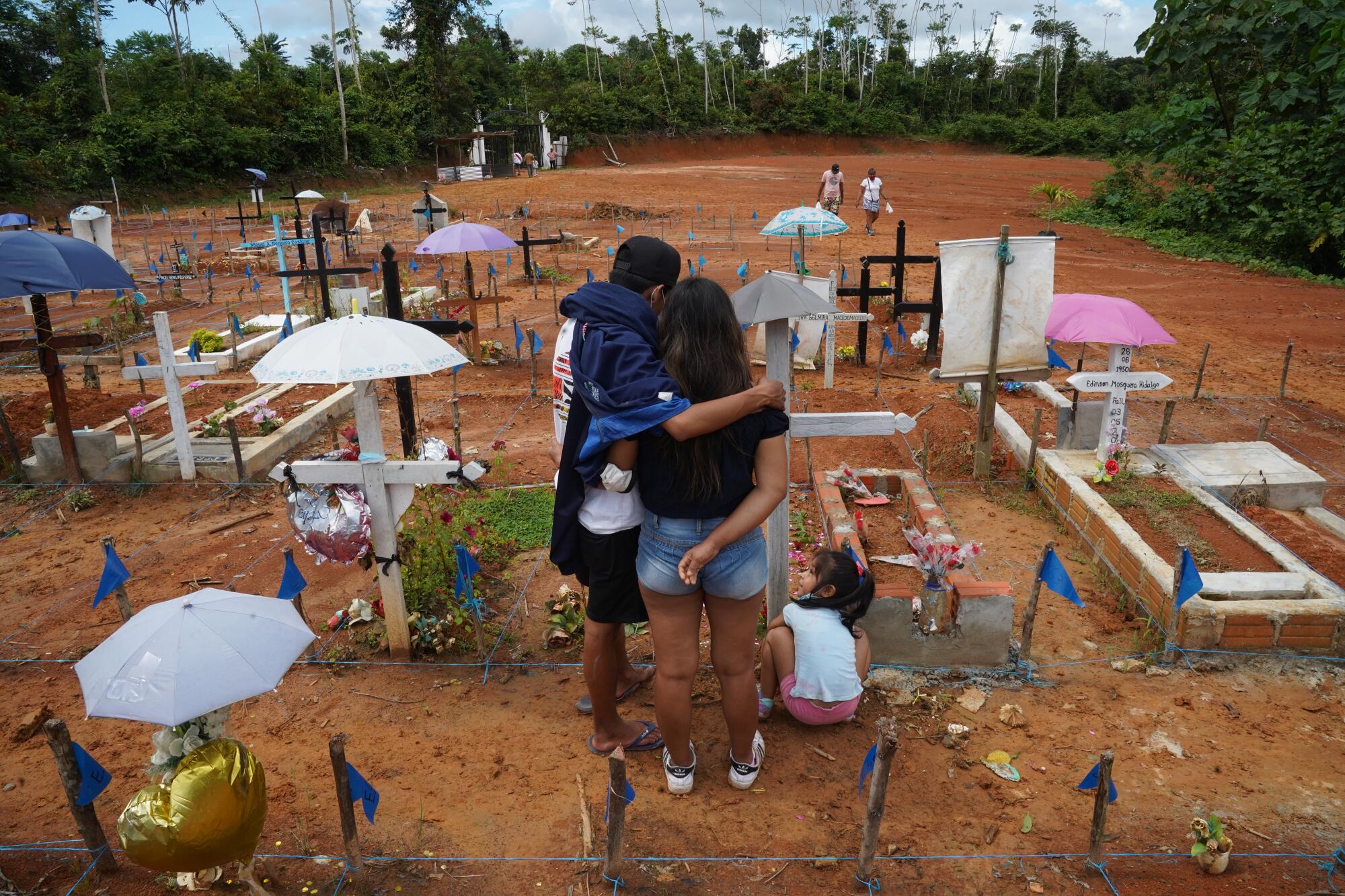
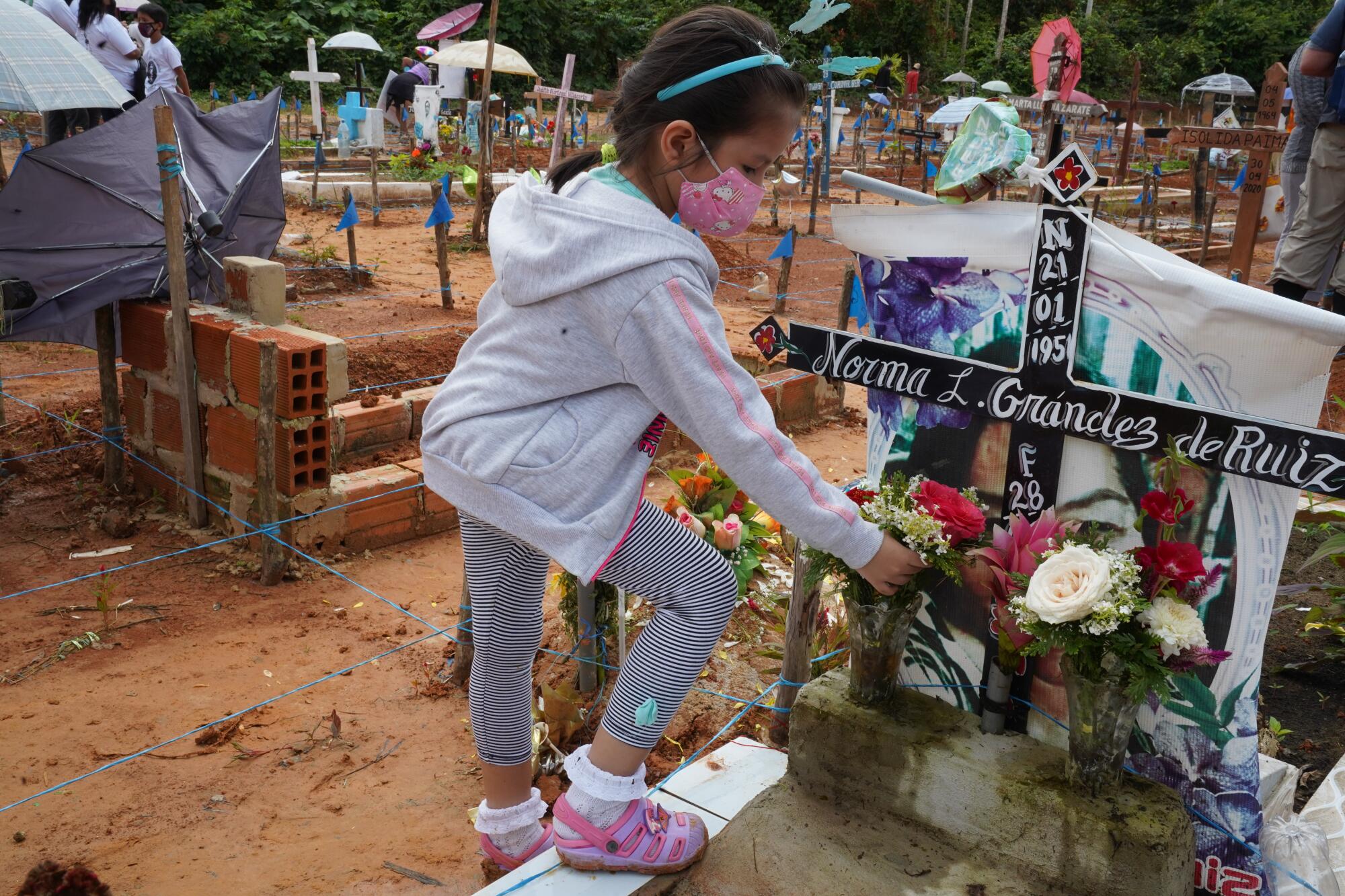
::
That smoldering discontent exploded in street uprisings across Colombia, including in Bogota, the capital, where demonstrators occupied the Las Americas mass-transit esplanade and renamed the plaza “La Resistencia.”
Amid continuing high levels of COVID-19 infections, hundreds of thousands of Colombians have taken to the streets since April demanding social and economic transformation. At the forefront of el paro nacional, the national strike, have been diverse legions of youths rejecting a system they say has robbed them of opportunity and hope. The pandemic has forced many to drop their studies and take minimum-wage jobs.
“Why are we here? Because we have nothing more to lose,” said Juliett Murillo, 19, an engineering student who was among hundreds gathered last month in a protest rally at Resistance plaza. “We finish the university and what kind of jobs can we find? Working in a call center or in a restaurant. And with COVID, everything has gotten worse.”
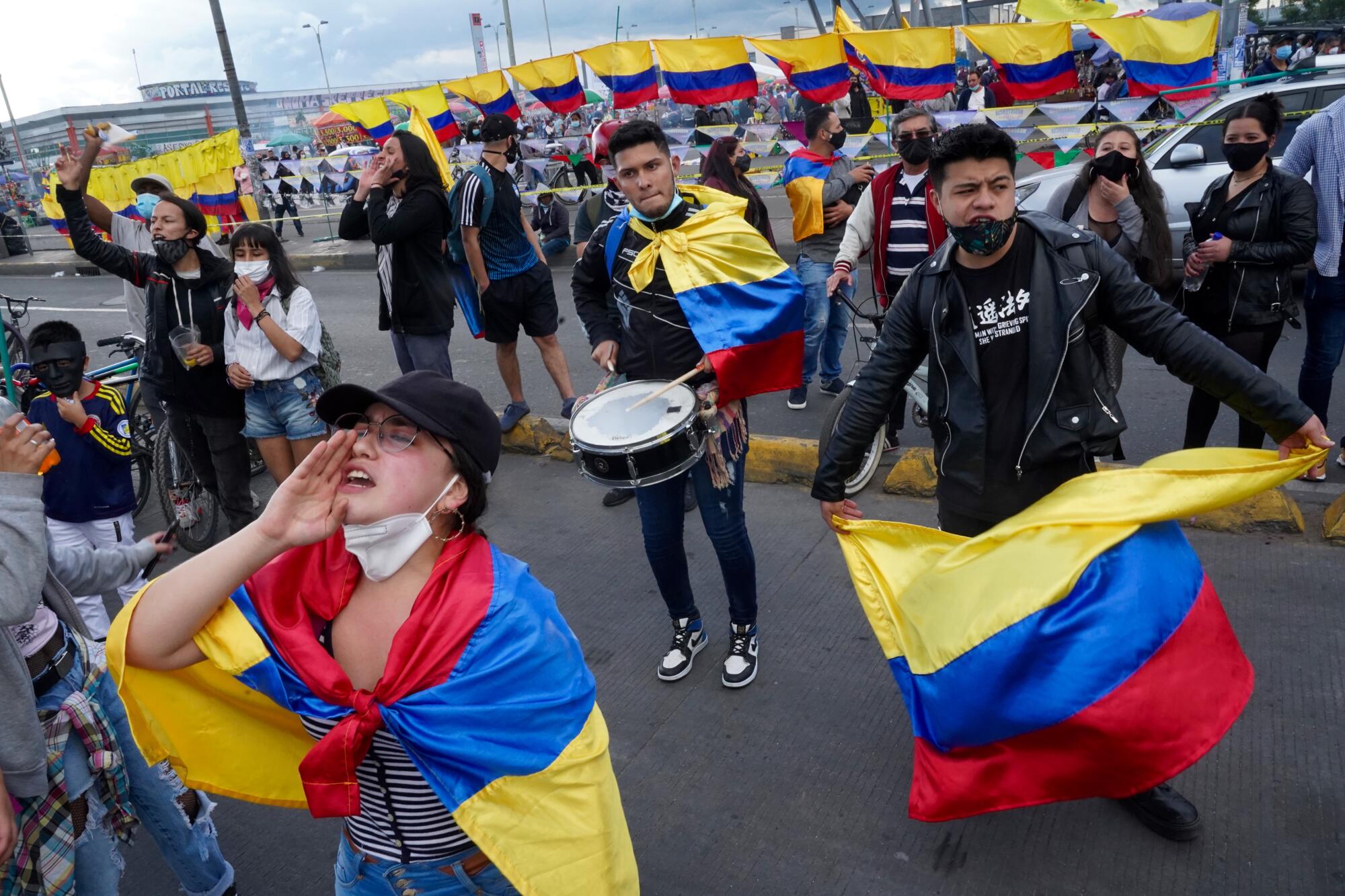
Accompanying her at the rally were her sister, Nesly Murillo, 17, also an engineering student, and their parents.
“In my generation we couldn’t fight back — the government imposed taxes, took away our labor rights, and we had to accept it,” said the father, Fernando Murillo, 43, a cattle broker. “I’m here to support the young people fighting for their rights — and for the rights of future generations, my grandchildren.”
A few days later, hundreds set off from the national university campus amid chants of “Viva el paro!” (Long live the strike) and the accompaniment of drumbeats, the ubiquitous soundtrack of the protests.
“To be young in Colombia today is to have no future,” said Stephanny Avedaño, 20, a third-year student in literature and political science who hoisted the banner of her university as she marched in the intermittent rain. “We are fighting for a life of dignity.”
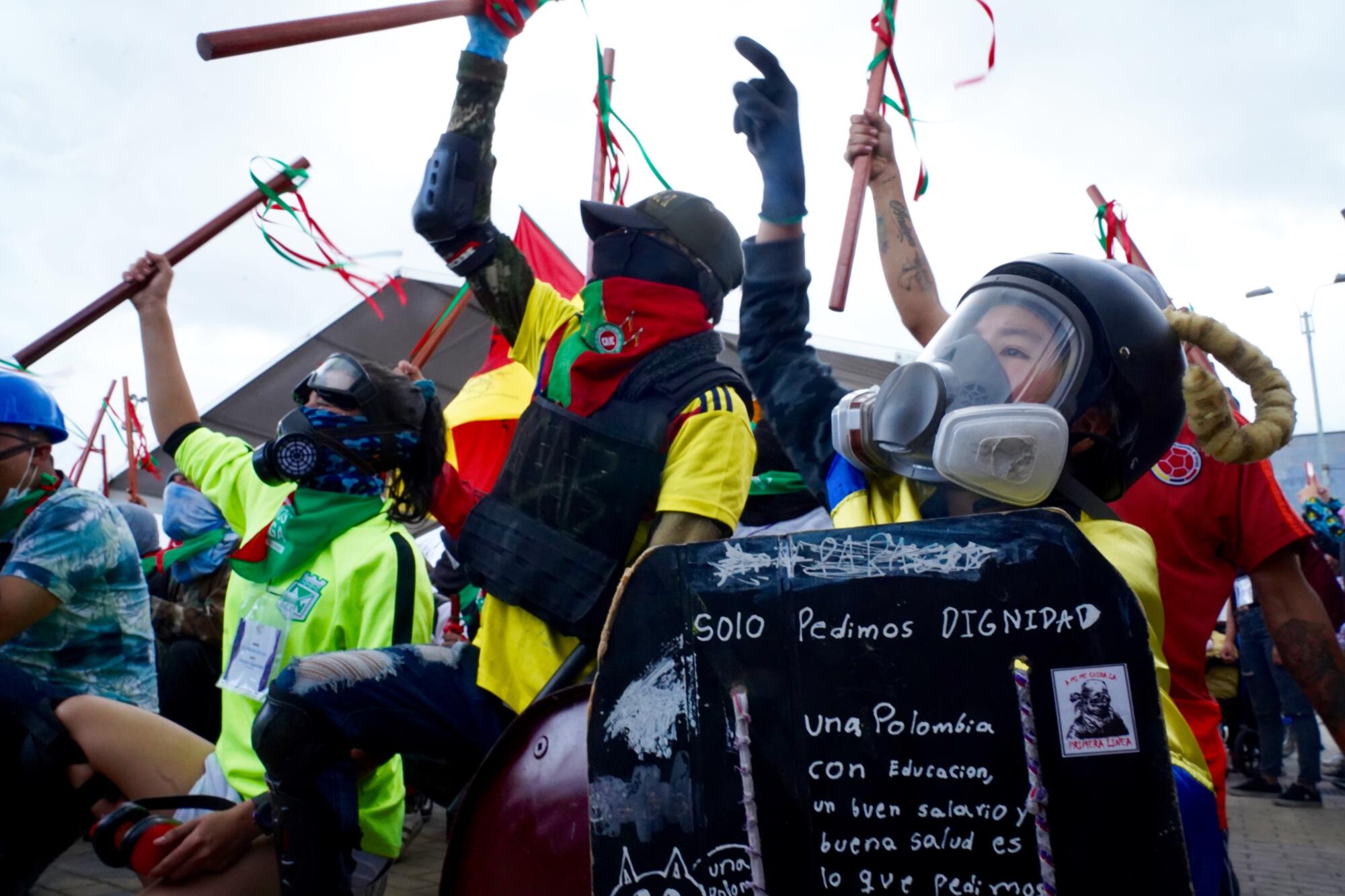
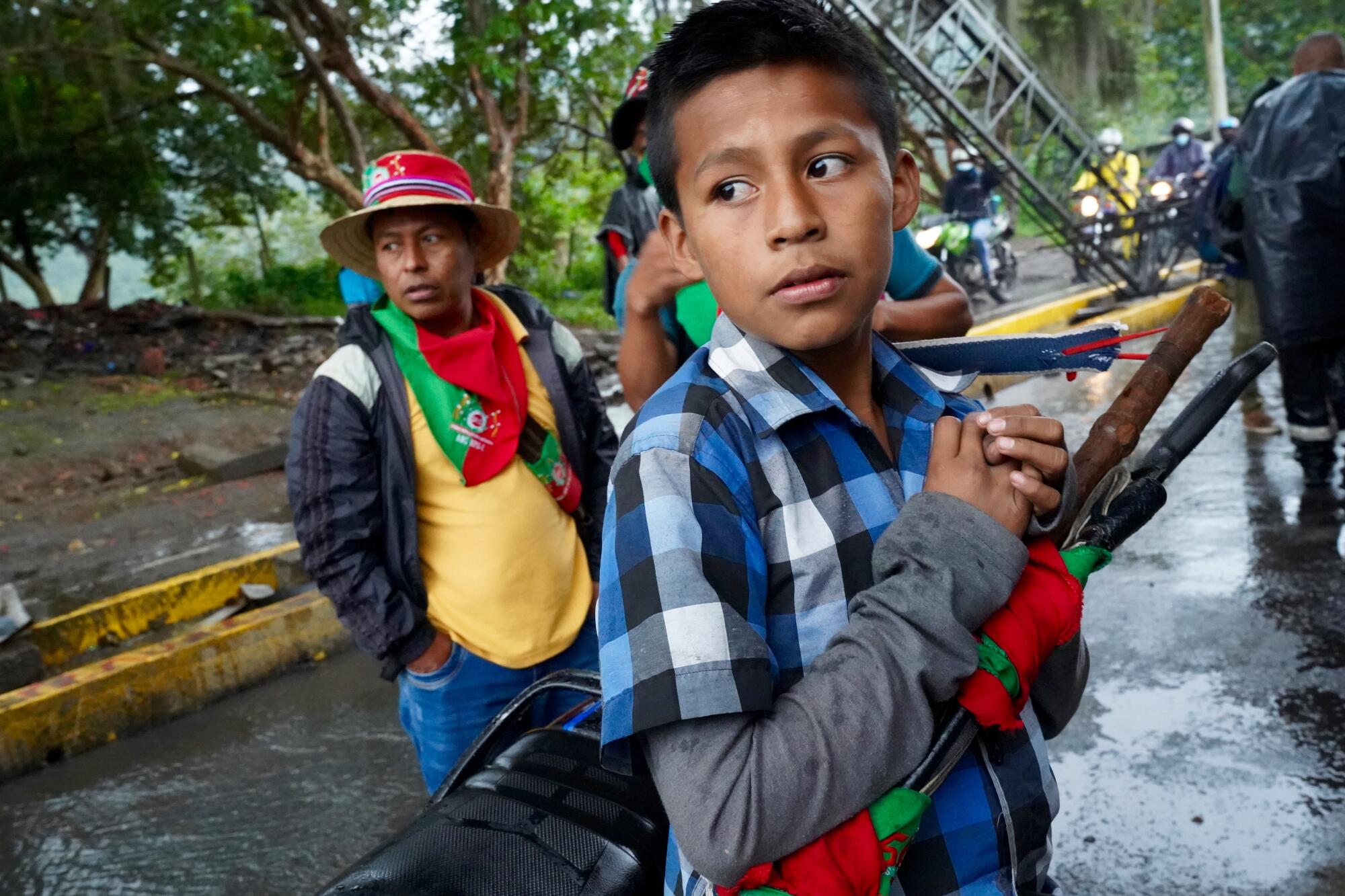
Job prospects are grim for the young in a region where almost half (48.5%) of the population is under 30 — compared to 38.7% in the United States, per the United Nations — and the per capita income of $7,404, is one-eighth of that in the United States, according to the World Bank.
Like others, Avedaño is worried about the accumulating debt from her studies at a private university. An older brother graduated in 2014 and is still paying off the costs. “Today, for Colombians, to study is practically a privilege,” Avedaño said. “Really, just to survive is a privilege.”
A group of marchers outfitted in suits to mock Colombia’s political class rallied outside the attorney general’s office and ripped open bricks of flour — unleashing billowing clouds of white powder symbolizing how the multibillion-dollar cocaine trade has corrupted authority in the world’s largest cocaine producer.
The Colombian government has blamed the unrest on “terrorist” provocateurs, citing attacks on police stations. Human rights groups have documented dozens of protest-related deaths, most at the hands of police and shadowy gunmen. Organizers suspended street actions following two months of turmoil, but vowed to press demands for a more just society — and fresh protests erupted on July 20, Colombia’s independence day.
The lack of any clear resolution dramatizes how grievances continue to fester throughout Latin America, setting the stage for future upheaval. Large-scale street protests have hit both Brazil and Cuba in recent weeks.
::
“The strike doesn’t end here,” declared Noelia Campo, an Indigenous leader wearing a traditional straw hat and poncho against the backdrop of a burned and toppled toll station along Colombia’s Pan-American Highway. She spoke in a driving rain as demonstrators lifted a roadblock put up more than a month earlier on the stretch of road linking the cities of Cali and Popayan.
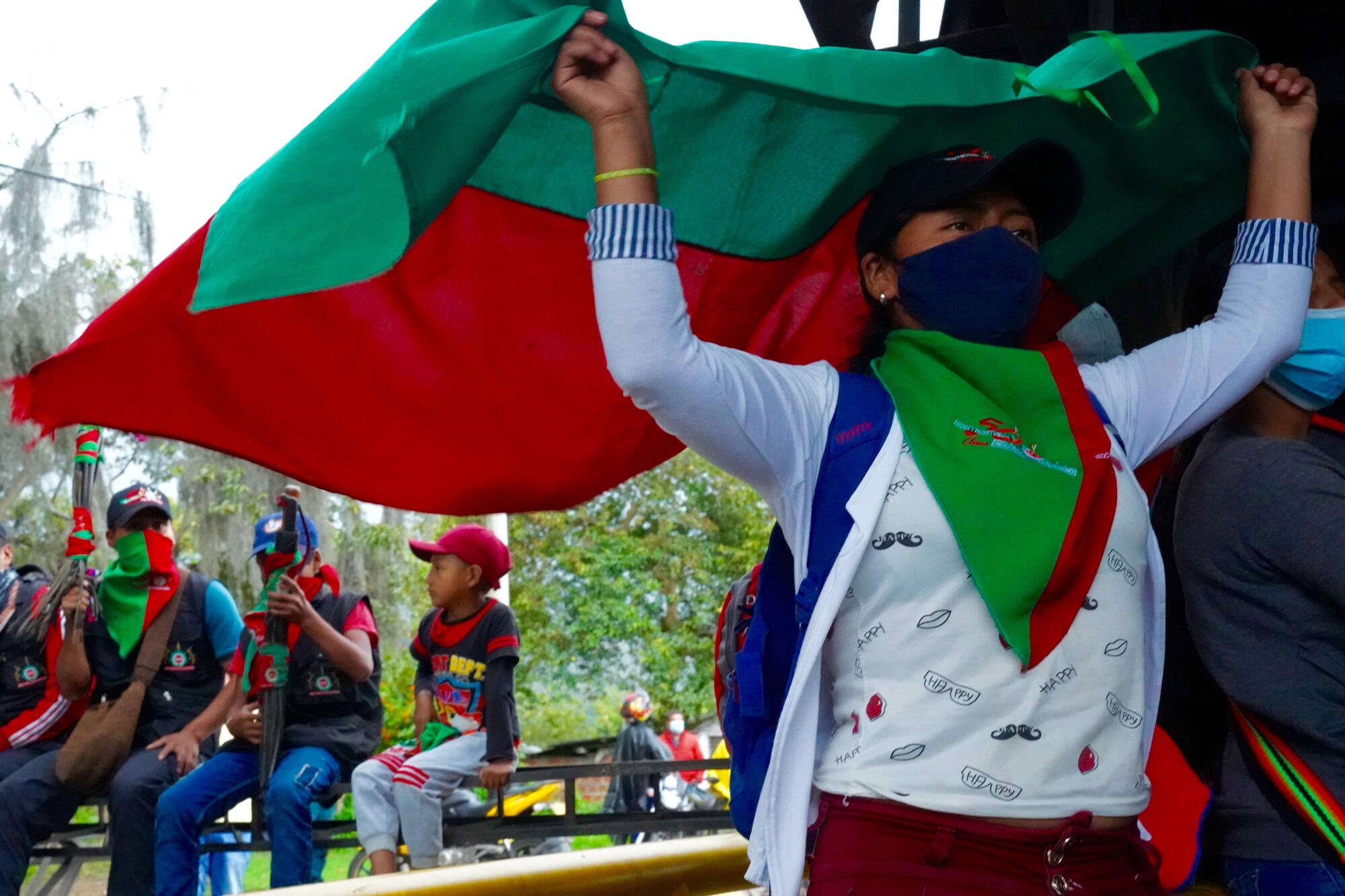
Young Indigenous, Afro-Colombian and peasant activists have been in the vanguard of Colombia’s street rebellion. For them it is not only the future that’s imperiled but the essence of their identities and cultures. They target monuments honoring Spanish conquistadors and colonial-era figures — whom they view as symbols of a racist legacy — and champion the cause of long-marginalized communities that have seen their fates worsen in the pandemic era.
“Social inequality is what prompted us to rise up,” said Campo, 29, as she stood along the highway in Colombia’s southwestern Cauca province, a majestic but violence-plagued region of pine-studded mountains, verdant valleys and luminous lakes.
Cauca, where government authority is largely absent, is well-traveled terrain for cocaine traffickers, paramilitary gunmen, wildcat miners and sundry rebel factions that seize land with impunity. Scores of social activists have been assassinated in Cauca and adjacent regions in recent years, human rights groups say, a trend that accelerated during the pandemic.
Among the victims was Yordan Eduardo Guetio, 26, who championed peasant rights in the town of Corinto in Cauca. He was riding his motorcycle on the evening of Feb. 2 with his father when armed assailants forced Guetio to get off the bike, his father subsequently told local radio. Guetio’s body was found an hour later.
“To be a leader here is to run a grave risk,” said Liliana Pechené, 34, a former governor of the Guambia Reserve, an Indigenous community in Cauca. “Here they kill three or five people and in reality those lives have no value because ... the state ignores it,” added Pechené, a mother of two, speaking inside a traditional dirt-floor adobe gathering place at her mountain home.
Daniela Anacona, 24, an organizer with a campesino (peasant) association in Popayan, the provincial capital, is among the millions of Colombia’s “displaced,” those forced to abandon their home regions because of the country’s endemic insecurity. When Anacona was 3 years old, her family fled to Cauca from southern Putumayo province.
“With the violence we suffer, with the pandemic, with the loss of income, we are in a permanent war for the future of our children,” said Anacona, speaking in a cafe in Popayan.
Before the pandemic, Anacona said, she had intended to attend university, but now she sells fruit at a market while pushing for a societal makeover and caring for her 4-year-old daughter.
“There are so many young women here who become prostitutes, and boys who become gunmen or sell drugs because they have no other choice,” said Anacona. “Because of a lack of education and opportunity.”
::
“If there are no tourists, how do we eat?” asked Maribel Tuyro Curo, 22, her anguish evident. “Will we ever be able to make a living again?”
She and her husband, Gustavo Yapo Pumachara, also 22, are among the multitudes of vendors hawking hand-woven garments of alpaca and sheep wool on the streets of Cuzco, the onetime Inca capital that sits at a cool 11,000 feet in the Peruvian Andes.
COVID-19 has throttled tourism worldwide, with far-reaching economic consequences across Latin America, from Patagonia to Cuba to Mexico. Relatively few visitors have begun trickling back to Cuzco, long a favored destination for backpackers, hipsters, jet-setters, and a jumping off point to visit Machu Picchu.
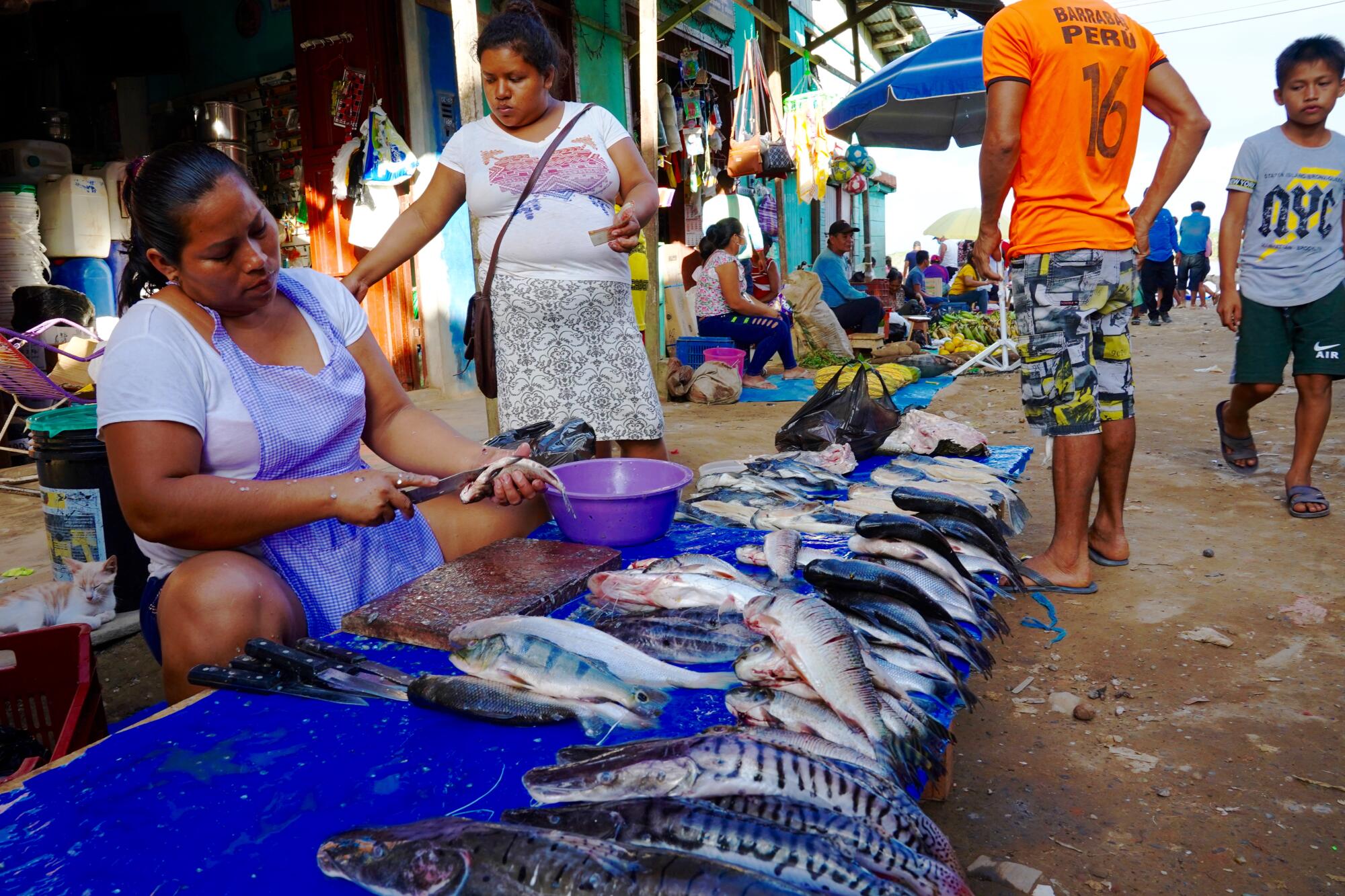
The young artisan couple’s income, never substantial, was at least sufficient to raise expectations for a better life. Now their earnings have plummeted to close to nothing.
They met while he was serving a two-year army stint, posted to far-flung zones where the military battles narco-traffickers. He has since learned to weave bracelets and helps with social media advertising for the couple’s handiwork, including sweaters, hats and other wares. Both dote over their 20-month-old son, Dorean Taylor, who accompanies the pair as they set up shop alongside an outdoor wall where intricate Inca stone work forms the base.
“I don’t want my son to have to sell on the streets, like his parents,” the father said.
Tuyro’s pregnancy was a difficult one. She said she almost died. Then the pandemic came.
She and her infant son took shelter at her parents’ home in a village outside Cuzco, where the family grows corn and potatoes. Tuyro was reared as one of 12 siblings and learned weaving from her mother, joining her on sales excursions. Her father crafted wool bags.
As a girl, Tuyro recalled, sometimes there wasn’t enough food at home, a memory that haunts her.
“I would love to have my own shop with my own creations, made by hand, everything of high quality,” she said, also expressing a desire to go back to school and study design.
That vision seemed very distant at the close of another shift of futile commerce.
As the sun set on snow-topped peaks, husband and wife packed their unsold items into a blanket and hauled them away, heading up the venerable stone streets, son in tow, their struggles more dire than they had ever imagined.
::
“There’s a pretty teacher,” Felipe Salomón Valles recalled his father telling him.
The young teacher was invited to Valles’ family home in Nauta, a lively river port in the Peruvian Amazon. He took her for a ride on his scooter. Valles and Consuelo Julca were engaged in 2015.
Valles didn’t have a teaching degree but got a job at a primary school with his wife at a hamlet in the forest. The pay was minimal, but villagers provided a simple home. “It was something very beautiful to live together as a couple and as teachers,” Valles said.
Their daughter, Mia Salomé, was born in June 2018 in Iquitos — a onetime rubber boom town still only reachable from outside by plane or boat, though its streets buzz with scooters and three-wheeled taxis. COVID-19 hit the area with force, providing a dystopian preview of future havoc elsewhere. The sick overwhelmed Iquitos’ feeble healthcare system.
It got so bad that authorities last year secretly buried hundreds of pandemic victims in unmarked graves in a cleared patch of jungle about 12 miles outside Iquitos. The action sparked outrage once it became known. Relatives are demanding that the remains be dug up, identified and properly interred. They placed crosses on plots where they believe their loved ones are buried, and many showed up on Father’s Day to pay respects.
Valles is trying to move beyond such moments. Out of work, he is studying online in hopes of landing another teaching post in an extremely tight market: “When I was younger I had a lot of aspirations, but I had to leave my studies to work and help my family,” said Valles, who did stints as a waiter, mechanic, clothing salesman and in 2012 at a shoe factory in Lima, the Peruvian capital.
“I like to be in my tierra,” said Valles, who did not take to the big city. “I like my forest, the people, their communities and their culture.”
He was content teaching in the hinterlands with his wife, but the spreading pandemic in March 2020 triggered their flight on a banana boat and subsequent slog through the jungle — hauling their daughter, suitcases and chickens, before returning to Nauta. However, the lockdown meant that Valles’ wife, Consuelo, was not with her father when he fell gravely ill and died in Iquitos in May.
She continued teaching remotely, although the lack of internet access complicated matters. She would dispatch lessons in writing via boat upriver; the children sent their homework back on boat as well. Valles fell ill — he was bedridden for two months — and couldn’t teach. The couple exhausted their limited savings. They are jobless, their futures on hold.
“These are hard times for everyone, but I believe that eventually there will be work and opportunities,” Valles said. “I always have hope.”
::
Marlon Ashanga navigates his canoe, powered with a small outboard motor, along the Itaya River, an Amazon tributary defining his Belen neighborhood.
Many of Belen’s 65,000 residents, including Ashanga, migrated here from distant settlements, seeking something better than the subsistence life of the forest. Denizens of the vast interior arrive daily by boat to deliver fish and jungle produce to markets in the ports of Belen and Nauta.
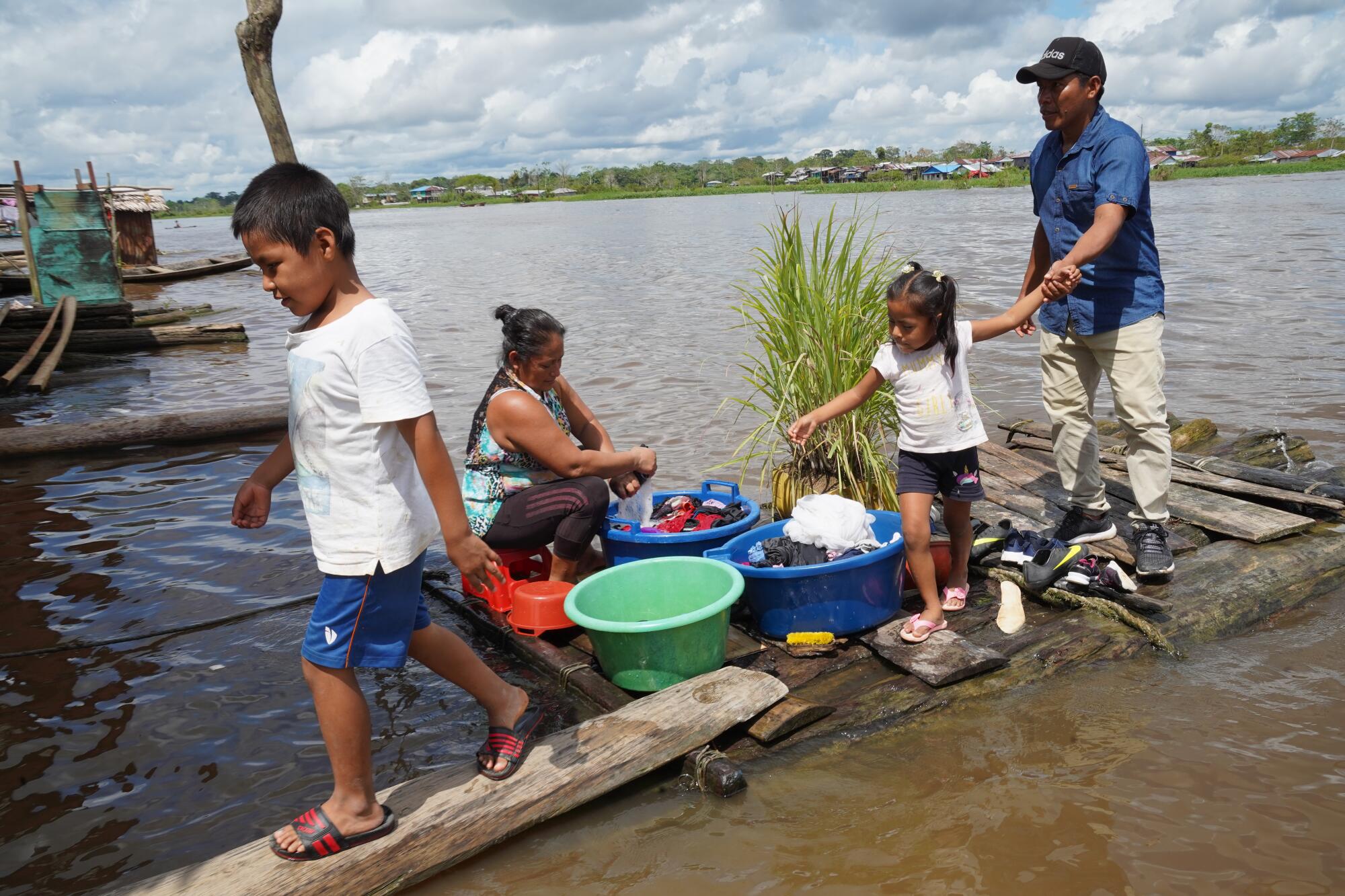
As the pandemic took hold, Ashanga was felled for 15 days with a high fever. He assumed it was dengue — a not-uncommon ailment in Belen, where mosquito-transmitted and water-borne diseases flourish. His father, 70, then fell ill, apparently with COVID-19. The old man couldn’t get up; he implored his son to leave him to die. The price of oxygen and medicines had soared.
A desperate Ashanga decided to evacuate his family to the relative safety of the forest, where he had been reared and knew how to survive and find medicinal plants and herbs.
“I didn’t have any money,” Ashanga, 35, said. “And to live here in the city you need money.”
In four days, tapping a skill he learned as a boy, he and a nephew crafted a 25-foot canoe fit for the treacherous voyage.
The Ashanga family headed for Manchuria, a settlement of 300 people three days upriver via the mighty Amazon and sundry feeder waterways. While Ashanga has relatives there, the initial welcome was a wary one: The newcomers had to quarantine in the bush for 15 days. They built a makeshift hut and lived off the jungle bounty of fruit, vegetables and fish.
The family returned four months later to Belen and their home on stilts in the Itaya floodplain.
But the pandemic has eliminated a key source of Ashanga’s income — river jaunts for jungle visitors through the malodorous canals of Belen, sometimes called the “Venice of the Amazon,” a dubious analogy. Reports of escalating infections and emerging variants have kept outsiders away.
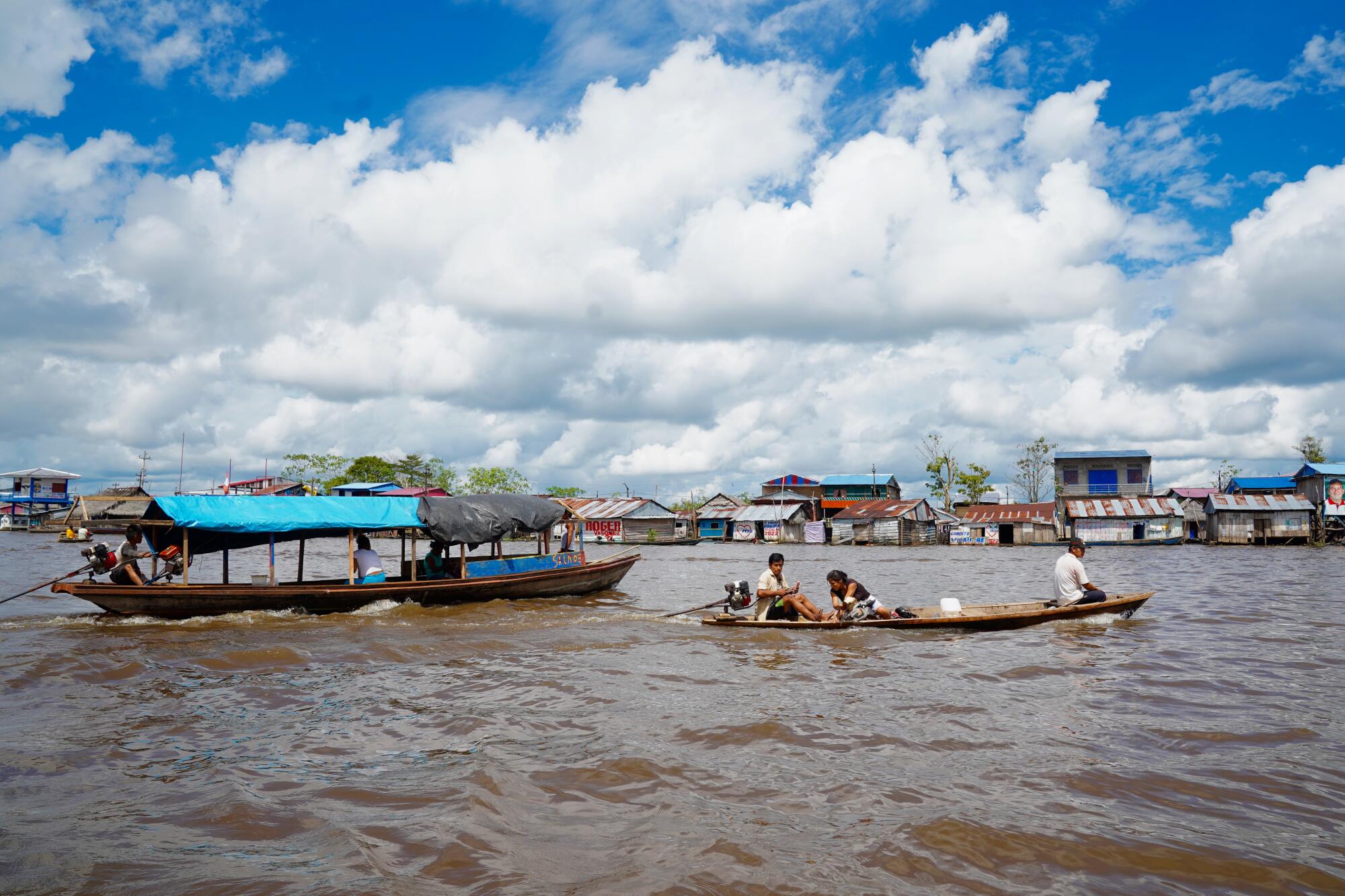
“After all we have been through, it feels like we still have to work harder and harder just to survive,” said Ashanga. “Right now, we have nothing.”
His canoe passes riverside bars and shops, fellow boatmen hauling loads of bananas, clumps of water lilies entangled with trash and barefoot boys kicking a soccer ball on a muddy pitch. Instincts honed in the forest helped Ashanga get his family out of harm’s way at a perilous moment. Now he and countless other young men and women must find new paths to put shattered lives back together.
Special correspondents Liliana Nieto del Río in Peru and Colombia, César Leonardo Rojas in Colombia, Adriana León in Lima and Cecilia Sánchez in Mexico City contributed to this report.
(This is the second in a series of occasional stories about the challenges the young face in an increasingly perilous world. Reporting for the series was supported by a grant from the Pulitzer Center on Crisis Reporting.)
More to Read
Sign up for Essential California
The most important California stories and recommendations in your inbox every morning.
You may occasionally receive promotional content from the Los Angeles Times.

